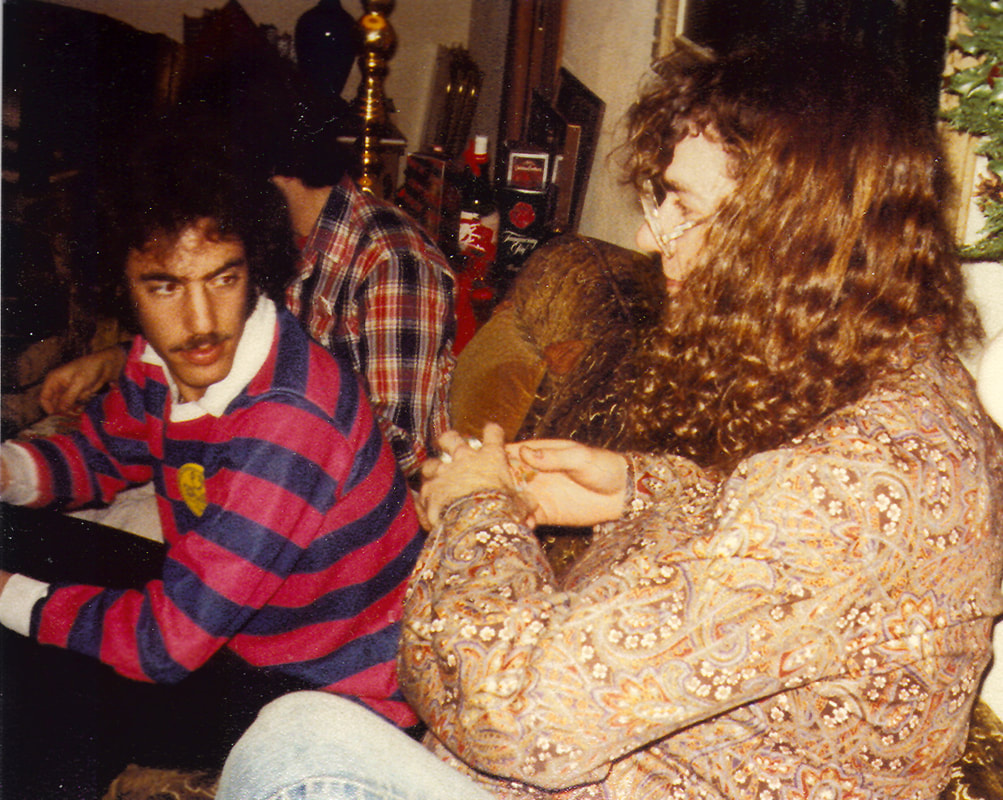Charles Rice Goff III | Interview | New Album, ‘Heartbreaking Randomness’
Charles Rice Goff III is an extraordinary musician that has released hundreds of songs and compositions since the early 80s.
Many of those were released on cassette through his own label, Taped Rugs Productions, in a very DIY style and most are available for download on archive.com. Charles Rice Goff III, a San Francisco Bay native, was exposed to and influenced by a number of experimental and avant-garde musicians in the San Francisco underground of the ‘70s and ‘80s including The Residents, Henry Kaiser, and Laurie Anderson. 2023 saw the very first vinyl release by Goff, ‘Heartbreaking Randomness,’ pressed in collaboration with Herby Records.
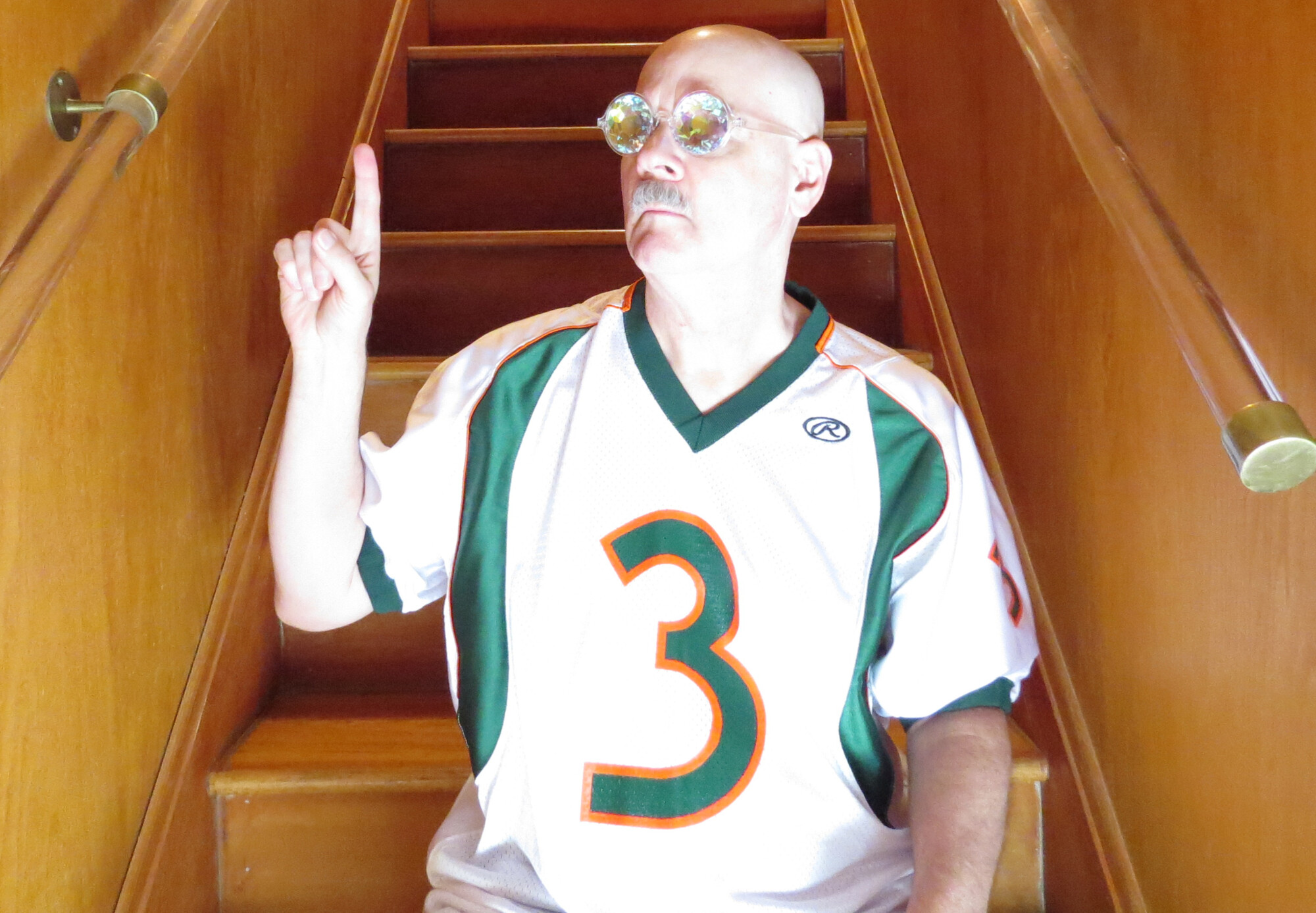
“The music scene in the Bay Area is a very wide open subject”
When and where were you born?
Charles Rice Goff III: I was born during the late 1950s on an island in the San Francisco Bay. The city where my parents lived in the East Bay area was without a hospital of its own at that time. There wasn’t even a freeway on the east side of the bay in those days. My folks had to drive about 20 miles north to facilitate my birth, mostly up Mission Boulevard and East 14th Street, to the medical facilities that had offered care to my family for years before they moved south to what then was considered the suburban frontier. These facilities were located on the island city of Alameda, California.
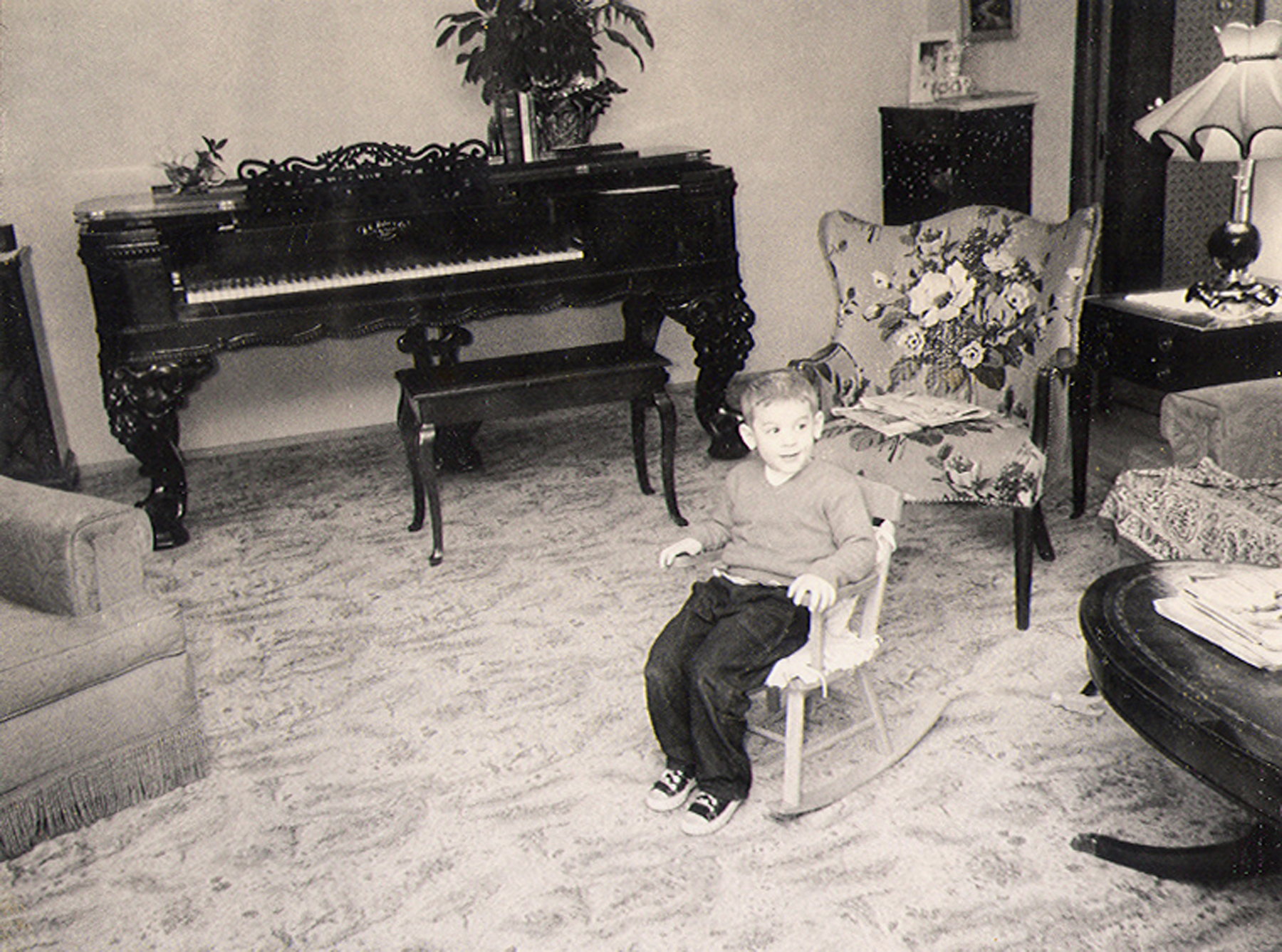
Was music an integral part to your upbringing? Was music regularly present in your childhood home?
Present and prominent. My folks had a nice console stereo which offered sonic accompaniment to many meals and occasional social activities — mostly lounge vocal and easy jazz stuff. To complement this home hi-fi ambiance, my parents also took me to see several lounge act live shows as a kid — Steve and Eydie, Sammy Davis Jr., Engelbert Humperdinck — that sort of thing. These shows had a seminal effect in developing my own personal singing and performance styles, which I literally cashed in on in the early 1980s when, for a while at least, I made a living as a singing telegram messenger.
My childhood home also accommodated an old baby grand piano that provided me with an excellent outlet for my first efforts into musical improvisation. Neither of my folks ever played this piano themselves, and they always claimed it was out of tune, but it served my youthful explorations of harmony and dissonance quite perfectly.
My sisters are a decade-plus older than me, so as a little kid I got a lot of exposure to their contemporary 1960s records — folk, rock and roll, pop stuff. They also were both musicians. One played woodwinds in the high school band and acoustic guitar around the house. Eventually she ended up playing in some big city symphonies. My other sister played a lot of folk guitar, performing occasionally for social events. You may have listened to The Doors album I did a few years ago: ‘Swinging From Loose Hinges’? I dedicated this album to my sister, Charlee, who long ago provided her own copy of the first The Doors album to me for repeated listening, and who, after I nearly wore that record out, purchased a brand new copy for me, which I still possess as of this writing.
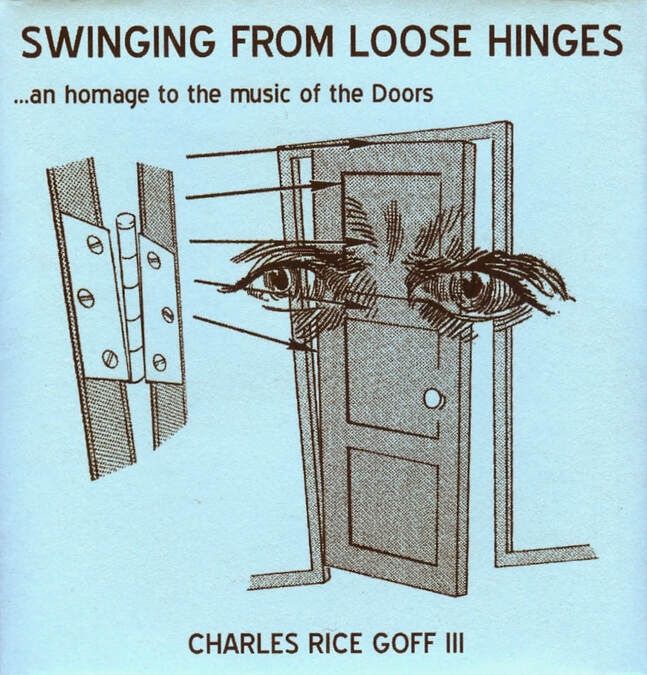
What was the first band or group that you performed with?
Ha! Well, the FIRST band I ever performed with was my grammar school’s band, conducted by my one and only ever formal music instructor: Bill Cameron. I played clarinet, not particularly well, but by sixth grade I made it up to the first row (last seat, however, ha!). I never took any formal music lessons after sixth grade. I taught myself how to play guitar in high school, and, after that, learned how to play a number of other instruments on my own, each with varying degrees of success. All that improv I did as a kid on my parents’ piano has thus proved a life-long asset to my musical pursuits. One really important thing I learned from Mr. Cameron in grammar school was how to read music. Although I can’t just open a score and sight-read music these days, I actually write a lot of my own scores both on paper and with MIDI composing programs. I could never pull this off if I didn’t understand the rudiments of musical notation.
You spent a number of years in the San Francisco Bay Area, what was the music scene like at that time and how were you involved?
“The music scene” in the Bay Area is a very wide open subject, and I lived out there from the 1950s to the 1990s, which covers a lot of musical history. An awful lot of things related to the Bay Area music scene influenced my own musical interests and activities over the four decades or so when I lived out there.
Of course, the whole 1960s youth generation/counterculture thing had its effect on my early upbringing. Although I lived in an East Bay suburb, my local environment was not sheltered from the 1960s cultural revolution going on in the big cities nearby. Actually, my very own next door neighbors owned and operated a hippie discotheque right there in my suburban home town of Fremont, California. Hippies regularly occupied the park next to my grammar school– we kids often would find discarded syringes, drug paraphernalia, wine bottles, et cetera while playing out there. Some of the teenagers who lived on my block ran away from home to join the action up in San Francisco and Berkeley. Noticeably the youth culture of the times was steeped in psychedelic music, and I was growing up right there in the middle of all its alluring influences.
In the 1970s I got a drivers license and attended lots of concerts in San Francisco, San Jose, Berkeley, Oakland, et cetera. These events were often attended by members of the counterculture, which continued to exert its influences in the Bay Area after the Swinging Sixties had run their course. As I grew older, my exposure to more and more varieties of musical composition and sonic experimentation led me to wanting to be an active participant in the whole experience myself.
I attended UC Berkeley after high school, which solidified not only my interests in experimental music, but my interests in social activism as well. I’m sure you know that the Bay Area has always been a focal point for people-power politics, and its message has often been carried forward by Bay Area artists. It should be no surprise that my own musical activities in the late 1970s began to reflect my discomfort with those powerful individuals and institutions whose enterprises lead to wars, environmental devastation, human suffering, et cetera. Later, as a young adult, I made a living by working with non-profit groups who fought to better enforce environmental laws, improve living conditions for convalescent hospital residents, initiate a nuclear weapons freeze, provide affordable housing to low income families, and halt runaway utility rate increases. I met several of my musical collaborators through my involvement with activist organizations, including my very close friend and Disism/Herd Of The Ether Space colleague, Killr “Mark” Kaswan.
The original music that I first performed publicly as an adult during the early 1980s was very off-beat electronic stuff. In those days there were some Bay Area based acts who made a living of sorts by playing avant-garde music: Henry Kaiser, The Residents, Laurie Anderson, et cetera. Mills College in Oakland actually trained people to produce electronic and other experimental sorts of music. But such avant-garde musicians were (and still are) very much “underground” in the Bay Area, and most of them relied on grants and academic institutions to fully realize their projects. The Bay Area “music scene” in those days had no night club venues that regularly featured such music either. Myself and my friend/collaborator Steve Schaer developed an act called “-Ing” in those days. We played several night clubs that normally featured punk and rock music, but the club owners never considered us to be the sort of act that would bring in big crowds to whom they could sell lots of alcohol, so we rarely got called back. Of course, most of those clubs paid us virtually nothing as well, so we were quickly made hip to the reality that whatever we wanted to do musically was never going to be a path to making a living. Our musical experimentation was destined to be self-produced, self-funded, and professionally unmanaged.
In 1985, after -Ing had stopped regularly performing publicly, myself and Killr Kaswan launched a project called Disism. Throughout the later 1980s, I would get together semi-regularly for informal improv sessions with an ever-evolving group of sound artists. Robert Silverman, who had composed and recorded with me off and on since the late 1970s, helped me come up with the name: “Herd Of The Ether Space” as a moniker for this loose-knit group of sonic improvisers. -Ing, Disism, and Herd Of The Ether Space all had given up on the hassles of night club performing after 1984. We began to show off our talents instead at rented venues, private parties, art galleries, festivals, et cetera. Attending these events, both as performers and as onlookers, allowed us many opportunities for meeting like-minded experimental artists, several of whom ended up collaborating with us on future projects.
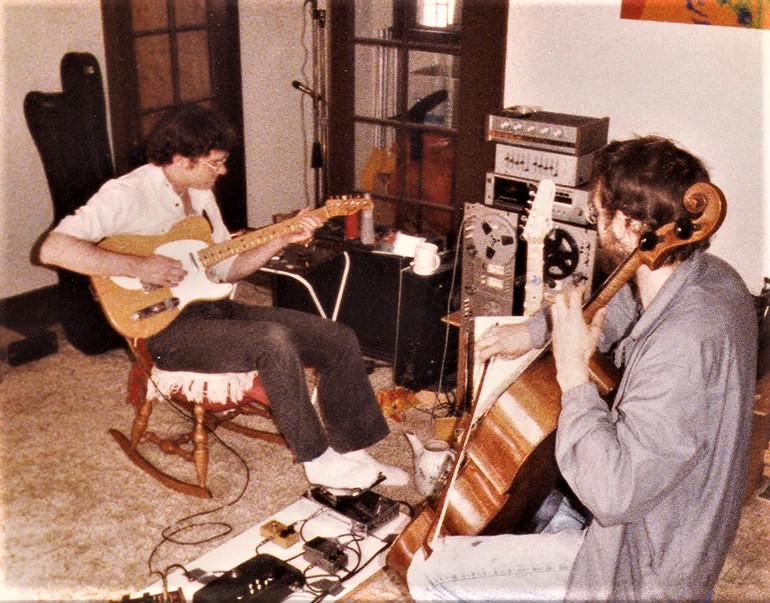
As you might imagine, we were producing a lot of recordings during this time. Fortunately for us, the Bay Area underground music “scene” was supported by several late night programs which were regularly broadcast from publicly supported and college radio stations. We eventually chummed with DJs from KALX Berkeley, KPFA Berkeley, KUSF San Francisco, KKUP Cupertino, KFJC Los Altos, and KZSC Santa Cruz. The tapes we sent out got surprisingly good feedback from the DJs and their listeners. Of course, these broadcasts featured music from lots of other experimental artists as well, which, in turn, helped us widen our awareness of just how big the underground music “scene” was — not only in the Bay Area, but in cities all over the country and the world.
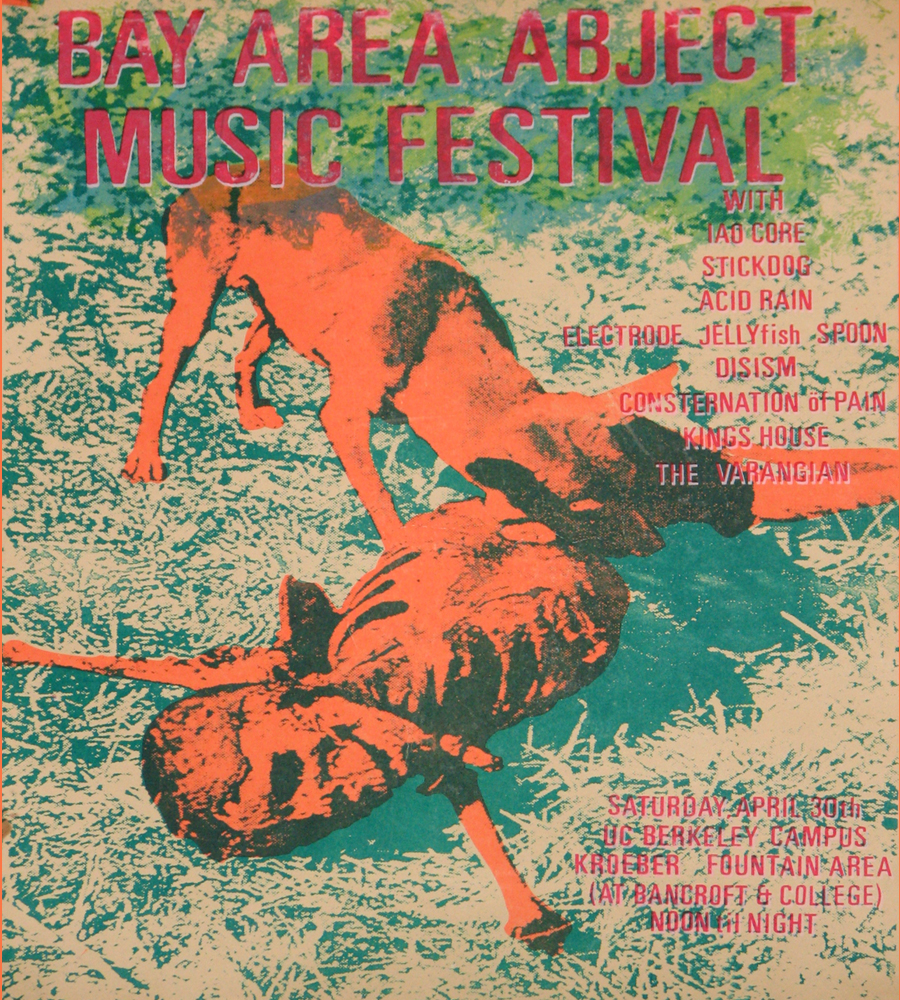
After Disism produced its first official cassette album in 1986, we not only began regularly corresponding and trading tapes through the post with several of these experimental artists, but we also started selling our cassettes on consignment in some of the more enlightened independent music stores in San Francisco, Berkeley, and Oakland. These record stores were another aspect of the local “scene.”
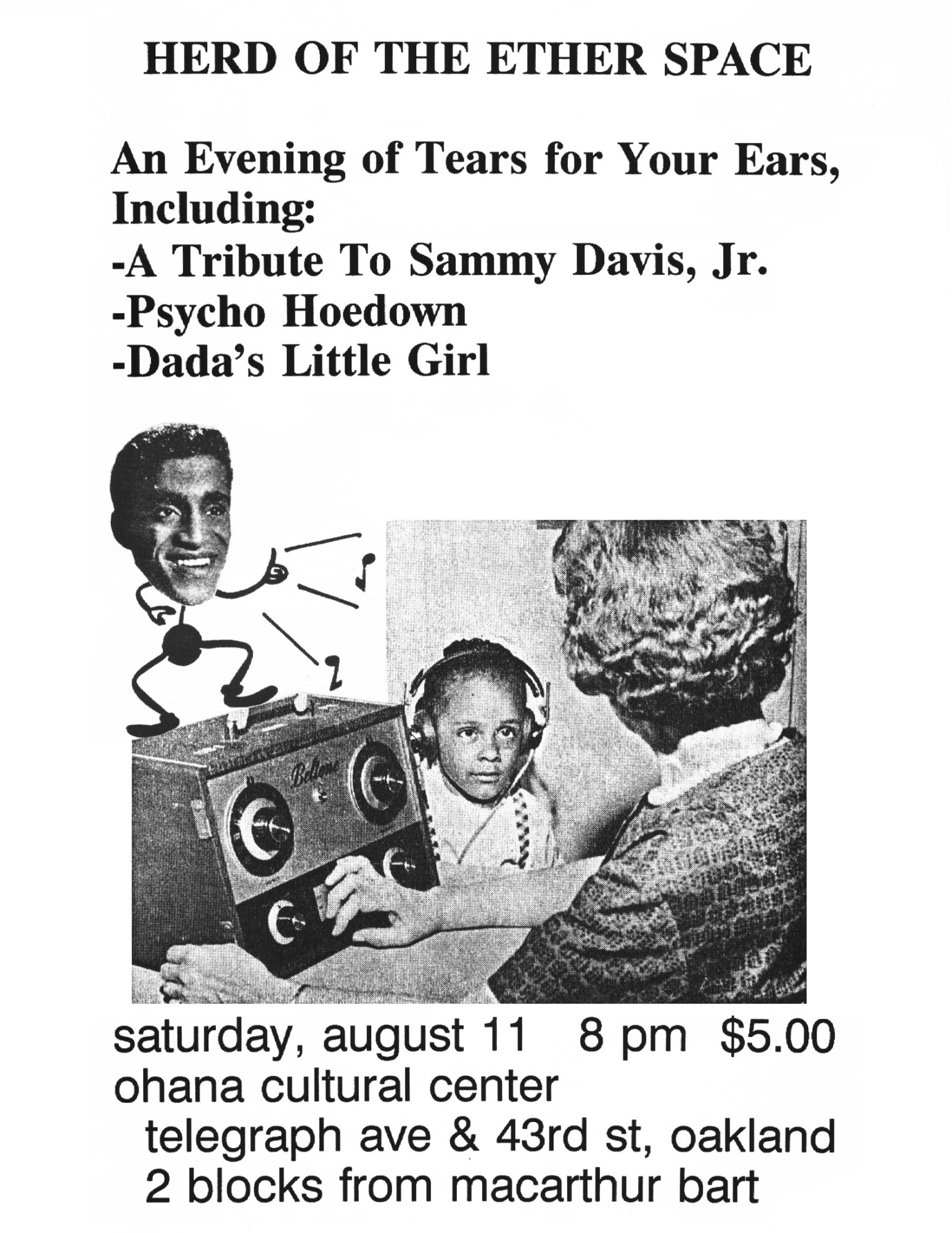
“I like to experiment with different combinations of instruments, non instruments, and recording technologies”
Over the years, you have collaborated with hundreds of musicians – any favorite or notable collaborations?
Well, to get to the meat of this answer, I must divert your attention to my motivations for working with other musicians. I have a tendency to get bored with doing the same things over and over. I guess this explains a bit about my love of improvisation, since each improv experience is unique. I like to compose music in all sorts of other ways as well: multitracking, collaging, working from scores. I like to experiment with different combinations of instruments, non instruments, and recording technologies. I like to choose themes to push my musical endeavors into areas previously unexplored. And whatever the mode of composition might be, incorporating different combinations of artists into its creation inevitably leads to knitting together new and unprecedented sonic textures.
So, as for favorites… I think this is mostly related to my state of mind at the time you are asking me the question. What I mean here is that when I want to hear a particular sort of music from the Taped Rugs catalog, I know where to go to find what I’m looking for. But that doesn’t mean it’s what I will want to hear tomorrow — or even a couple of hours later. One thing is for sure: there are plenty of artists I have worked with for whom I have the utmost respect regarding their talents. This list is extensive, and I feel that it would be difficult for me to mention specific collaborators here without leaving out people who deserve similar praises.
Over the years I have had some of my closest collaborators pass away to the next level of existence, and so, to sort of answer your question, I would like to mention three of them here. I miss them all very much.
Steve Schaer — my partner in the group -Ing. He was a great friend, a wonderful synth player, and always full of insights. He was the force who initially prodded me into night club performing. We developed a unique sound that has never been matched in my subsequent musical endeavors. A favorite recording involving Steve was made at the show that -Ing played at the old Fillmore Elite Club in San Francisco in 1983.
Robert Silverman — another great friend who collaborated and wrote music with me from my college days into the 21st Century, a co-founder of Herd Of The Ether Space. He always provided themes and ideas that were out of my normal box of thoughts, and often these developed into unforgettable musical realizations that I could never have achieved without his influence. He was also a uniquely gifted guitarist and synth player. A favorite recording that really shows off Robert’s guitar talent is the 1988 Herd Of The Ether Space cassette album: The Chaos Of Bobby & Chuck — two 45 minute long improvs filled with non-stop twists and turns.
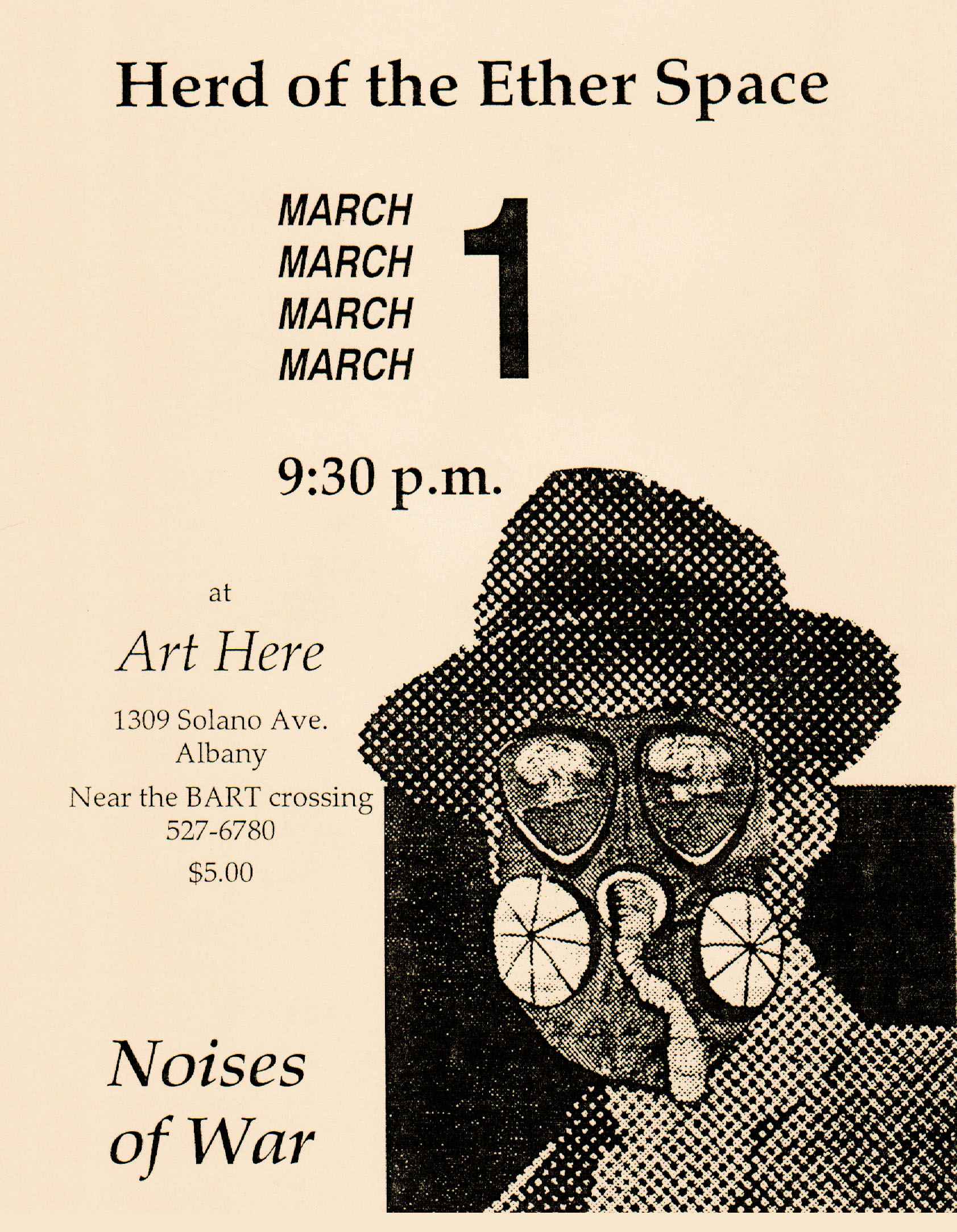
Michael Adams — yet another great friend, and a co-founder of the group Turkey Makes Me Sleepy. Mike was a quick thinker — conjured some of the most interesting lyrics, sampled lyrics, and artistic themes of anyone I’ve ever worked with. His guitar playing never ceased to impress me, and he played any other instruments he got his hands on with lots of skill too. A favorite among my collabs with Mike is the Turkey Makes Me Sleepy show and cassette album that we recorded at Alley Cat Records in Lawrence, Kansas, in 1997.
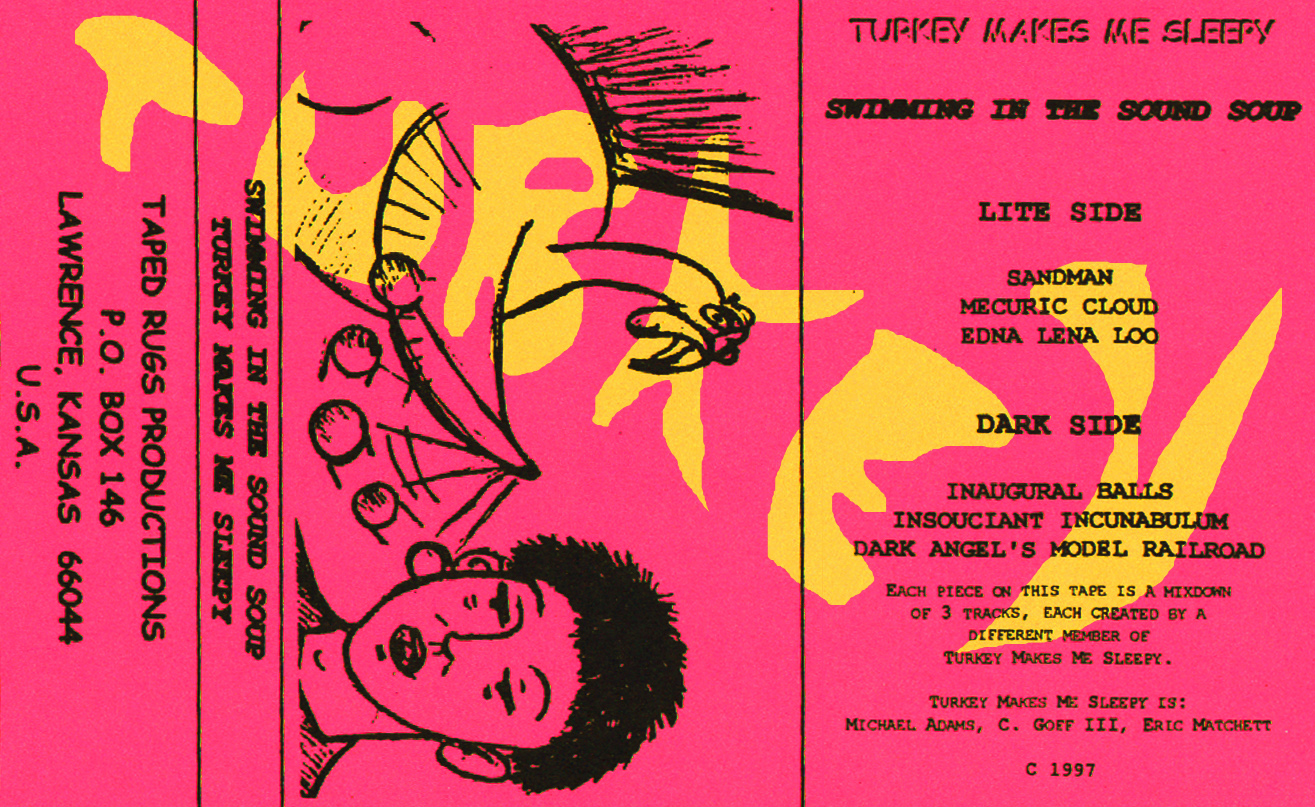
Do you have any stories to share regarding live performances?
Through interviews and album notes over the years I have revealed details of several of the more memorable live performances I’ve been involved in, so here I’d like to recall one that I haven’t spoken much at all about before. This show is the first -Ing performance that Steve Schaer and I did back in January, 1983. It was the very first night club show I ever participated in.
The show was held in an old building on Telegraph Avenue in Oakland that had recently been converted from something like a warehouse into a nightclub/bar, which on most nights of the week catered particularly to lesbians. The place was called: Ollie’s Radcliffe Hall. A group of underground promoters called the Committee Against Visual and Audio Numbness hosted the event. They had put on a few very interesting programs at Ollie’s in late 1982, which caught my attention initially because I lived only two blocks up the street from this new venue.
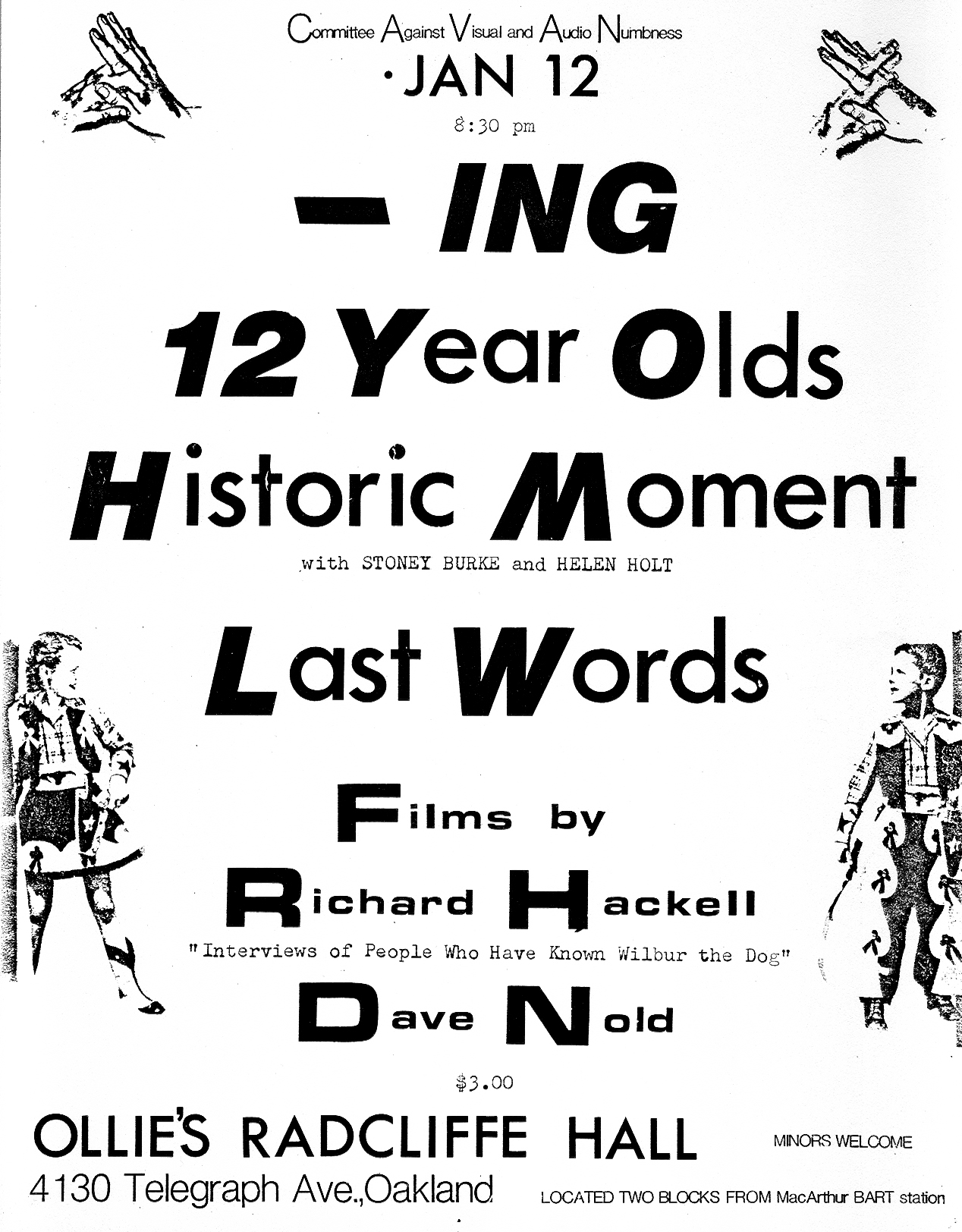
I don’t remember exactly how we arranged to perform there, although I sort of recall providing a tape of one of our recording sessions to somebody through the mail. I’m guessing Steve may have had something to do with setting up the gig initially. But, when the actual show was announced, our name: “-ING” was prominently displayed at the top of the promo poster, above all the other acts. In essence, we appeared to be top-of-the-bill headliners for this gig.
Steve and I had worked up an actual “set” to perform for this show. For several months previous we developed and rehearsed pieces that were composed specifically to be played through a Frippertronics-style tape loop system. As far as we knew, there was nothing else quite like what we were doing out there in the world of live musical production. (As 1983 progressed, we performed basically this same set of music for several audiences at various venues.)
I played electric guitar, enhanced by a few no-frills foot pedal effects. Steve twiddled the keys and sliders of an ARP Odyssey synthesizer, running through an old analog delay unit. Our instruments were fed directly into a reel-to-reel tape recorder, which ran its tape several inches through empty space into the playback heads of another reel-to-reel deck, creating an audio loop of recorded sounds that repeated about every four seconds. Our playing would continually add new bits to the recorded sounds, building up an ever-evolving orchestration as we progressed through our set. I hope that convoluted description makes some sense to you. It’s a hard process to explain without actually demonstrating it in person.
The tape decks were quite heavy, and setting up our equipment was a rather involved process. Nevertheless, we took full advantage of the venue being conveniently close to my residence, making multiple trips back and forth to bring even more heavy equipment to the venue for the purpose of providing a unique visual element to the show. I had a device called an Atari Visual Music in those days. You plugged an audio source into it, ran an output from it into a standard color TV set, then the thing processed all the music’s rhythms, pitches, and variances in volume into colorful geometric patterns on the TV screen. I gerry-rigged the thing to work with two large (tube type) TV sets, which we set up on either side of us in front of the stage.
On the night of the show, the place was packed, and it wasn’t really a small place either, so we had a nice big audience. I am not sure what brought such a crowd out to industrial Oakland. I know that the promoters put up posters around UC Berkeley on Telegraph Avenue where all the record and book stores were. Steve made some of his own posters and put them up too. I think the promoters may have done some outreach to a couple of local college radio stations before the show as well. To me though, that doesn’t really explain the huge crowd. Must have been the gods got involved for our benefit…
The audience got their money’s worth, at least from us, that night. We fortunately had no equipment glitches (equipment breakdown turned out to be a semi-regular problem for us at other venues later in the year). The audience seemed intrigued by our set up and by our actual performance, which featured such innovations as me speaking to the crowd through my guitar pickups and playing the guitar occasionally with arrow heads, mallets, a sex toy vibrator, and other odds and ends. We from time to time would physically grab hold of the spinning tape reels, which would create weird noises, which in turn were repeated over and over via the playback heads. Unfortunately, I no longer have access to the master tape that was made from the show that night, but recordings of other shows from later that year quite accurately demonstrate the sort of performance we did at Ollie’s.
When did you begin your label – Taped Rugs Productions? For those not familiar, how would you describe this eclectic underground label?
Taped Rugs Productions began back in December, 1980, with the release of my first cassette album: ‘Might As Well Beyond Venus’. I had cooked up the name: “Taped Rugs” about a year before that cassette release. At that time, myself, Steve Schaer, Robert Silverman, along with Gordon Lyon, had formed a sort of Zappa-esque band. That group never performed for a real audience, but it created some interesting music. After we had been playing together for a few months, we struggled to come up with a name for the group that everyone could agree on. At a rehearsal one day I suggested “KY” (I had been listening to a Fugs album around that time which prompted this suggestion). Anyway, everybody laughed, and then Robert said something like, “Well, temporarily.” Then everyone laughed again, and “Temporarily KY” was adopted as the name of the group, if and until a better name came up that we could all agree on. We never changed the name after that, however, although a lot of ideas were suggested over the next several months. “Taped Rugs” was one of those ideas that I offered to the group one day. Say it to yourself a few times, and you might get the idea of what it’s all about. Anyway, it was never adopted by the group, so I kept it for my own purposes.
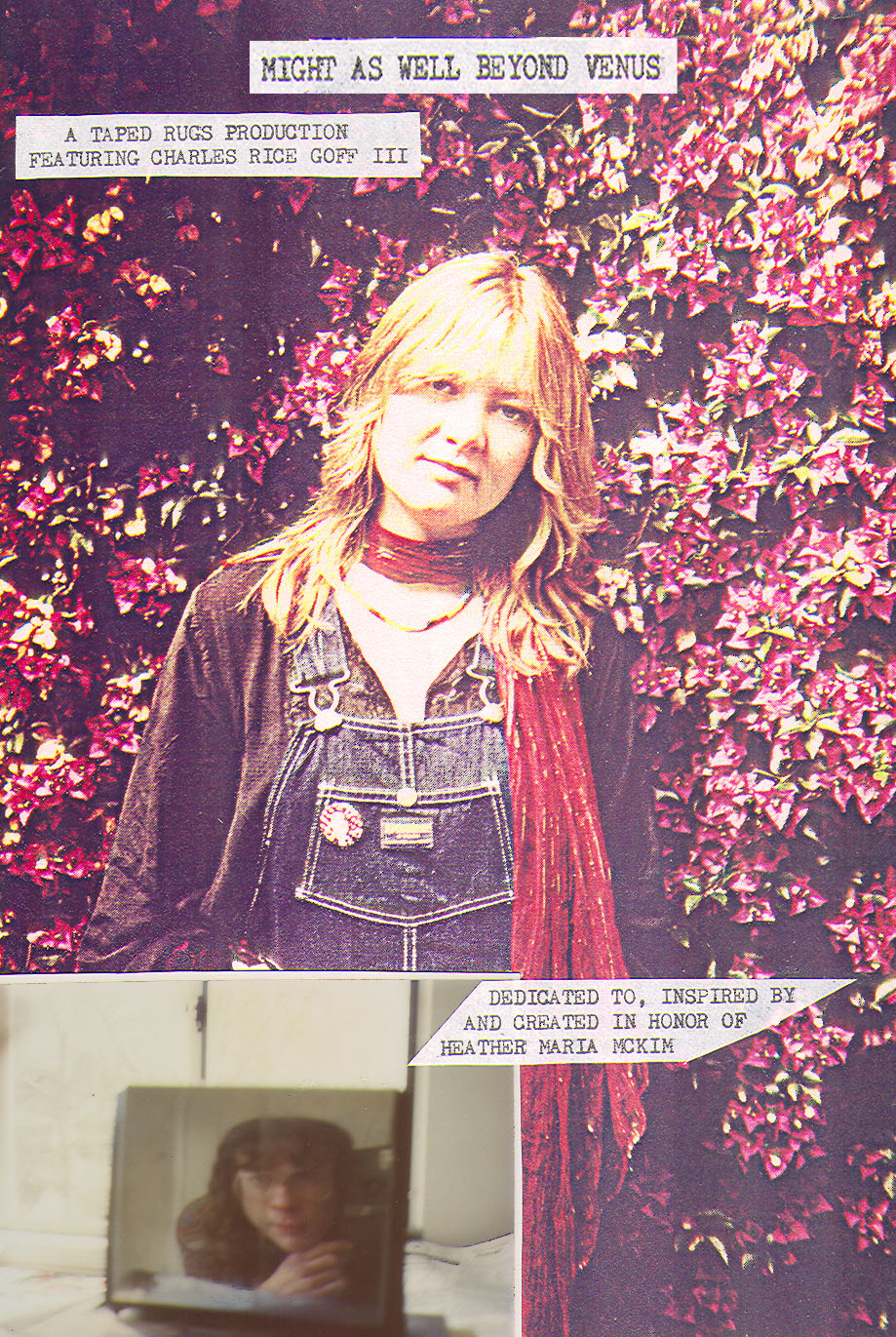
Taped Rugs Productions quickly became an umbrella name for any of my artistic endeavors, and it has stuck around now for over 40 years, representing all sorts of recordings, live performances, videos, poetry books, short stories, collage art projects, et cetera. So, basically, any Taped Rugs production represents something that I personally have been involved in somehow. There are a few recordings on the label that my only contribution to was adding them to the label and offering a degree of promotion. These few recordings are all works authored by artists who collaborated with me in some way on other projects, however — in essence, stuff produced by members of the huge Taped Rugs “family,” which extends to niches all over the world. You know, Justin, since he first started drawing cover art for Taped Rugs albums years ago, he has been a member of the Taped Rugs family too.
So anyway, there are no particular genres nor defined philosophies attached to Taped Rugs Productions. There are some listeners out there who get upset by all this eclectic diversity, as you might guess. If somebody listens to a couple of the extremely challenging old Herd Of The Ether Space improv tapes, then he or she might expect every Taped Rugs work to sound similar to those. Later, he or she might hear something like my album of experimental interpretations of 19th Century Shakers music (Acren Wacren Waney Vo) and get all upset because it’s so different from the Ether Space stuff.
In previous interviews, I’ve mentioned that my general artistic method is based on the idea that each musical composition I create (or each written work, visual art project, et cetera) has a life of its own. If it falls into someone’s concepts of genre, that’s no problem for me, and to an extent, I might very well agree with the assessment. But the reality is that the inspirations that lead to Taped Rugs productions each travel their own individual paths, and those paths lead to pretty much every Taped Rugs work having its own unique properties, often defying genre.
I should add that mood has a lot to do with people’s likes and dislikes when it comes to listening to music as well. If you are ready to party hard into a Saturday night, you are not likely to be playing a stack of Stockhausen albums for your friends. But for a night of mind-expanding tripping out, a stack of Stockhausen might be just the thing. Taped Rugs offers music to satisfy many moods — that party hardy group might enjoy stuff like ‘The Lore Of The Rugs’ and the trippers might settle back nicely with ‘Rooster Swing A Hen’.
As for the very first Taped Rugs Production: ‘Might As Well Beyond Venus,’ it is full of eclectic-ism all by itself. The album’s theme is basically that of a powerful, short-lived love affair — quite intentionally autobiographical, serving to put some reins on my own young and powerful emotional roller coaster. It includes the first works of -Ing, which at that time was an undefined project that encompassed all of my tape loop experiments, not only those I created with Steve Schaer. It also includes one of my oldest singer-songwriter songs — man, my voice was really different then from what it sounds like now… NOTE: I have recorded several versions of that song (‘Fly Away’) since then. Listening to all of these myself shows me just how much my singing voice has evolved over forty years. But I digress…
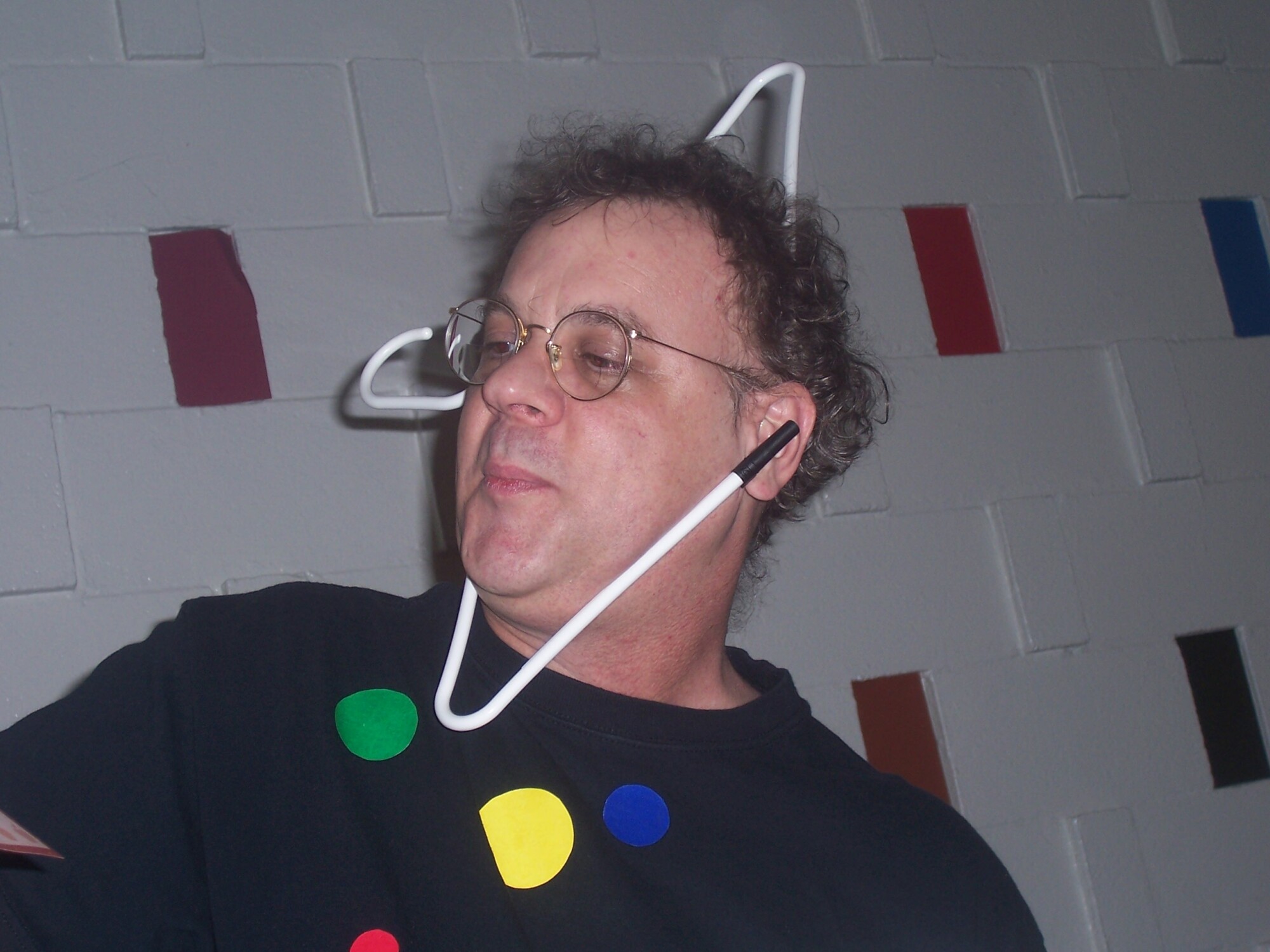
You are still an active and prolific musician in “underground tape culture.” What can you tell us about this “scene” that seems to be filled with individuals that are both musicians and collectors and still enjoy trading physical media?
Let me point out right at the beginning here that I haven’t released any “new” music on cassette since 2014, although I have released a ton of new music in other formats since then. I actually stopped regularly recording new albums on cassette around the turn of the century. At that time, digital recording technology and CD-r burning started to provide less expensive, quicker, and higher sound quality results than what could be achieved working with tapes. Many members of the long-established tape trading community gave up making cassettes around that time too. I actually proposed doing a cassette release with a friend around 2005, but was rebuffed because he didn’t believe anyone would be interested.
I still had a love for the old tapes then, however, so I started doing an online broadcast — called “Lo Finest” — under the umbrella of Jerry Kranitz’s Aural Innovations network. This was back when slow internet speeds made downloading music often an hours-long endeavor — before the idea, or even the word, “podcast” was part of people’s regular vocabulary. The show featured material from my own personal collection of home recorded tapes that I had procured from hundreds of experimental artists during the 1980s and 1990s. All the installments of the Lo Finest show are still available online.
Jerry Kranitz himself recently wrote a book about the underground community of cassette culture artists of the late 20th Century, which I recommend to anyone curious about the whole subject. There are also a couple of good video documentaries about the home-taping underground that have been out there in the public eye for awhile, including Andy Szava-Kovats’ Grindstone Redux, which takes on the subject through a sort of organic DIY presentation, featuring lots edits of video produced by the artists themselves.
Anyway, back to your question, between 2013 and 2018, Taped Rugs produced a few cassettes of previously unreleased recordings from the 20th Century — stuff by Disism, Turkey Makes Me Sleepy, and myself. On occasion these days I still make new cassette copies from the old Taped Rugs catalog for friends, DJs, collaborators, and collectors. However, most Taped Rugs albums are currently available as CD-r’s, and literally every Taped Rugs recording is available online at archive.org in some form.
What’s intriguing to me is that recently a lot of people who are much younger than myself are just now discovering those old Taped Rugs cassettes from back in the 20th Century. They are downloading the files from archive.org and re-posting them on YouTube. They are playing the cassettes on radio shows and podcasts. They are regularly selling our old tapes as collectors items. I was recently asked by a fan to make for him copies of all the old Turkey Makes Me Sleepy cassettes. It took a bit of work, but it was a labor of love which brought me many smiles.
I still enjoy trading hard copies of recordings through the post, mostly more recent stuff recorded on CDs. A lot of my associates from the 20th Century cassette culture have adopted the “online-only” method of exchange, however. While there are certainly a lot of advantages to posting music online, it often plays out as an inferior experience for me personally when it comes to accessing it as a listener. To me, the internet is an ever-changing, temperamental beast. Recordings get posted and get removed with frustrating regularity; web hosting sites come and go with new owners and ever-evolving updates. A lot of music is now only available as a “stream,” which is constantly subjected to the whims of the beast — signals die, buffering interferes, pop ups interrupt, somebody tries to sell me something, et cetera. If I just want to listen to music, disks and tapes are much friendlier for me to deal with.
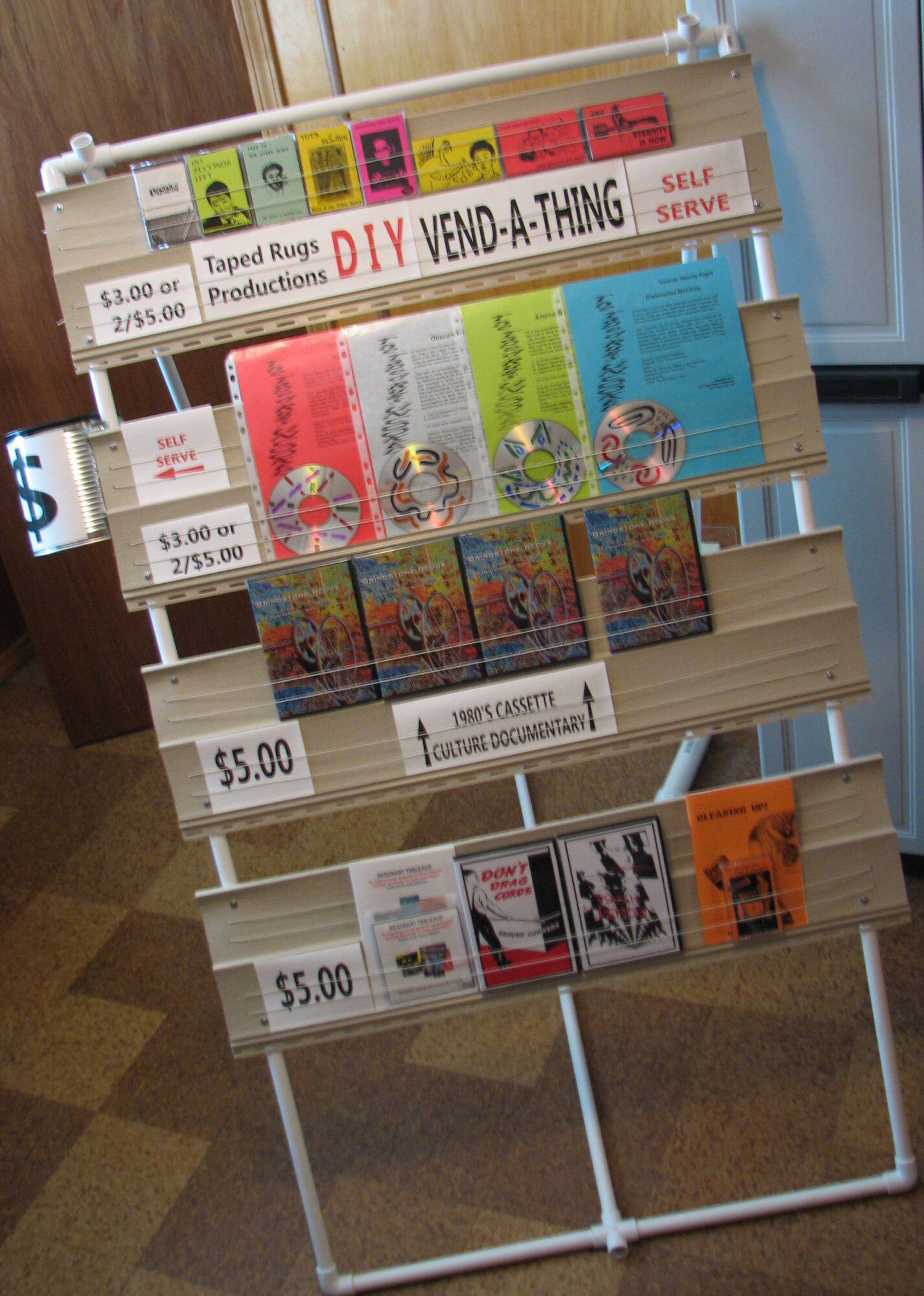
How did you compile the ‘Heartbreaking Randomness’ material? Was this new material? What can you tell us about some of the more important or significant tracks on the album?
The ‘Heartbreaking Randomness’ album, released in February of this year, is a good example of one of my “lyrical” collections. All my life I have been writing poetry and little narrative stories. I’ve also been lucky enough to have received a good deal of training in both creative writing and journalistic techniques. I’ve had quite a few news articles, short stories, poems, essays, et cetera published over the years. So, it’s only natural that I would, from time to time, want to incorporate my writing skills into my musical endeavors. It’s kind of like… I regularly build up this need to express myself through more than just abstract, mood-bending sounds, so every so often I need to incorporate a bit of verbiage into my sonic expressions. From the beginning, ‘Heartbreaking Randomness’ was conceived to be an outlet for my most current thoughts and ideas.
The last album featuring lots of fresh verbiage that I had produced (‘Genre Party’) came out in 2016, so it’s been a while. Genre Party, like just about every other album I’ve done containing my original lyrics, also contains interpretations of music written by other artists. One of the parameters I set for the ‘Heartbreaking Randomness’ album was to make it entirely original, with no cover songs on it whatsoever. Musically, I wanted this collection to be made up of several relatively short pieces, each one filled with several rhythmic twists and turns, employing a wide variety of instruments, non-instruments, and sound-generating technologies. I particularly wanted to include a lot of vocal backings and percussive bits in this collection. If I got into the real specifics of how I recorded these songs, each revelation would require several paragraphs. I’m guessing that all this detail would bore the hell out of most readers, so I’m going to stick to generalities here.
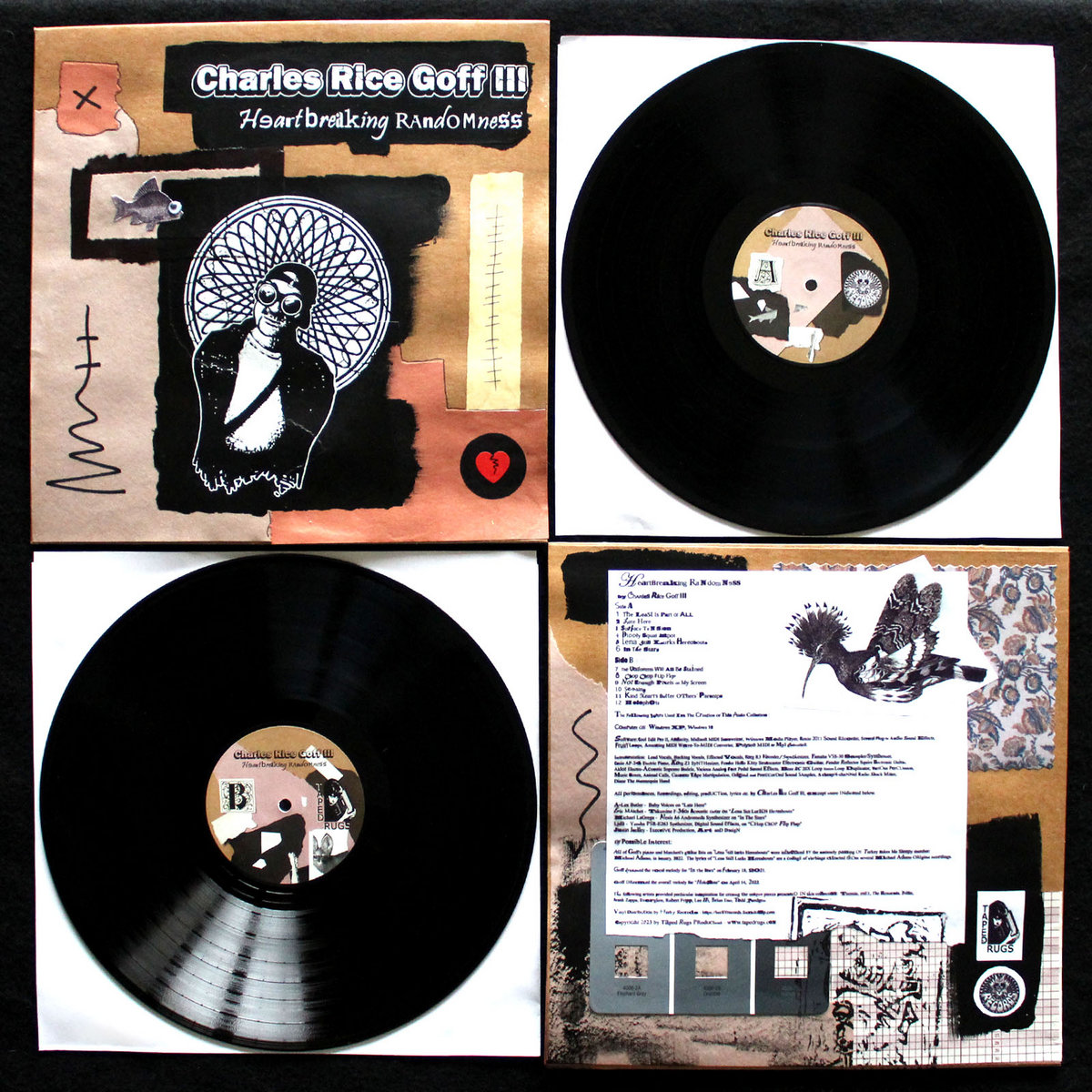
I should mention also that one parameter set for ‘Heartbreaking Randomness’ was not something that I had much control over. Neck and shoulder problems have plagued me for years, and by mid 2021, I was unable to hold a guitar on my back for more than about 15 minutes before the pain became distracting enough to interfere with my playing. From the 1970s up to 2021, my guitar playing, both electric and acoustic, had been a key element in most of my recordings and performances. I had to accept that those days were over for ‘Heartbreaking Randomness’. There are a few bits of guitar spread around on the album, but all of them were harvested from a large bank of previously unreleased recordings that I keep on my computers. Fortunately, I also play modified ukulele, and, of course, ukes weigh a lot less than guitars. Thus, a lot of the “string” sounds on the ‘Heartbreaking Randomness’ album were strummed on my ukulele.
The first song I recorded for the album was ‘Kind Hearts Butter Others’ Parsnips’. It sort of set the course for the album’s lyrical content. The few words in the song communicate simple, thought-provoking, observations. By year’s end 2021, I had also finished ‘Sensing’ and ‘The Least Is Part Of All,’ both recordings similarly sprinkled with little bits of awareness-enhancing verbiage. I’m sure you can sense in my words that I have some socially critical perspectives, but my style of writing here is far from the standard rebel folk ballad. Maybe more Tzara than Guthrie in its delivery…?
Anyway, it was about January, 2022, when Frank Herbertson from Herby Records suggested I cut some of my music into a vinyl record for them. The timing was perfect, since he said it would be a while before they would be able to physically produce anything, and since I was only just starting to conceive the elements that would eventually work themselves into a coherent collection of audio art.
Along the way to that goal, I incorporated little bits of inspired sounds from a few friends (and even a relative) into four of the recordings. Not to belittle the “importance” of any of these pieces, I’ll just put a bit of emphasis on the song: ‘Lena Still Lurks Hereabouts.’ It’s a tribute to my late Turkey Makes Me Sleepy collaborator, Michael Adams, who, as I mentioned earlier, left the world of the living quite by surprise in January, 2022. The music for the piece is made up of improvisations that myself and fellow TMMSleepy member, Eric Matchett, had recorded right around the time of Mike’s passing. These improvs have the mystique of being somehow guided by forces beyond our understanding…(Hey Mike, is that you moving my fingers?). The lyrics are bits and pieces from songs that Mike himself had written back in the late 20th Century, when TMMSleepy was an active recording/performing phenomenon.
Another “important” contributor to the composition process for a couple of the pieces on ‘Heartbreaking Randomness’ was my subconscious. All throughout my life I have been blessed with the magic of hearing music in my dreams. Sometimes this music even is enhanced with bits of lyrics. On occasion I am able to remember these little tunes after I wake up, then I can sing them into a recording device, and later on develop them into full-blown songs. Both ‘Holophote’ and ‘In The Stars’ contain melodies that I dreamt.
By June, 2022, all twelve of the pieces for ‘Heartbreaking Randomness’ had pretty much been shaped into their final forms. That’s when artist Justin Jackley, started to work on the ultra-cool, mail-art style, cut-and-paste artwork for the album cover. I am quite pleased and satisfied to have been a part of this unique artistic endeavor, and it wouldn’t be quite the same without Justin’s involvement, many thanks!
Will T. Gysin
Headline photo: – Ing
Taped Rugs Productions Official Website
Herby Records Facebook / Instagram / Bandcamp

